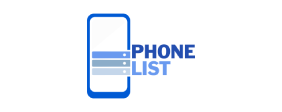Discover the ideal desktop icon format for perfect organization
The organization of icons on an operating system’s desktop is crucial for user productivity and efficiency. To achieve an ideal layout, it is essential to consider various aspects ranging from the size and shape of the icons to their distribution in the available space.
Size: Icons should be sized to
Facilitate quick identification without taking up too much desktop space. A standard size is usually between 48×48 and 64×64 pixels, but this measurement can vary depending. Here are some on user preferences and screen resolution.
Shape: The shape of the icons is also an important factor to consider. It is advisable to use simple and recognizable shapes that clearly represent the function or program they refer to. Square or rounded shapes are usually the most common due to their simplicity and ease of identification.
Layout: The layout of icons on the desktop should follow a logical order that facilitates navigation and quick access to the most frequently used phone number library applications or files. Icons can be grouped by categories or similar tasks, using folders or labels to organize them more efficiently.
Negative space: It’s important to leave enough space between icons to avoid the feeling of crowding and allow for more precise user interaction. Negative space around each icon helps to highlight them individually and improves the overall visual experience.
Personalization:
Finally, customizing the format of desktop icons is pursuing a career in digital marketing key to adapting them to the specific needs and preferences of each user. Some operating systems allow. Here are some you to change the size, shape, and color of icons to create a unique and personalized experience.
In short, finding the ideal format for desktop icons requires a balance between size, shape, layout, negative space, and customization. By following cl lists these guidelines and adjusting them to individual needs, you can achieve a perfect organization that improves the usability and aesthetics of your digital desktop.

